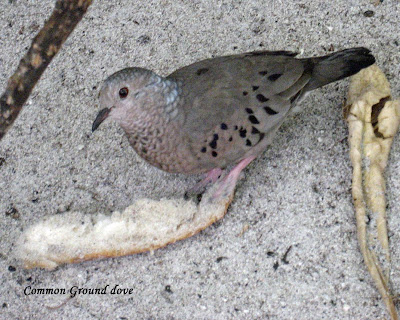February 27 – Costa Rica
We arrived into Puerto Limon and shortly thereafter disembark for our ride out to the countryside. an adventure in itself as after several miles the remainder of the trip is over rutted dirt roads made all Our destination today is the Veragua Rain Forest Research Park. The ride out to the center is quite the more interesting by the everyday rainfall. Once in the rainforest, however, we manage to dodge the rain drops which greet us and head into the forest via aerial tram. We are greeted by several Collared aracari, a member of the toucan family. Though not visable, the howler monkeys made their presence known with their guttural calls. Upon our return to the top of the tram, we found one of our favorite Costa Rican birds, the Montezuma’s oropendola. Sounding more like a tropical instrument than a bird, the gurgling call seems to typify the essence of the Rain Forest. It was about this time when the forest started liviinto ng up to its name…..the deluge struck with torrential rains falling on an already saturated landscape. Fortunately for us, we were able to retreat several of the museum buildings which housed the collection of native reptiles and amphibians. We were introduced to several of Costa Rica’s brilliantly colored poisonous frogs. Later as we walked the trails, we found a number of these finger-nail sized amphibians along the path. Their bright red color served as a warning to all would-be predators, “Don’t mess with me!” I asked about the best chance to find and photograph native parrots and was told to be patient. “Wait until you return to the ship, and then look into the trees around the docks”. Sure enough, after looking for less than 10 minutes , a flock of 5 – 6 Crimson-fronted parakeets flew into the trees, loudly announcing their arrival. Before long, it was time to reboard the vessel, however. Our Caribbean adventure would be climaxed by a two day sail back to Ft. Lauderdale. We’ve been thrilled to find so many great birds and chances to photograph them on a “non-birding” cruise. We’ll look forward to visiting these tropical birding hot-spots in the future.

















